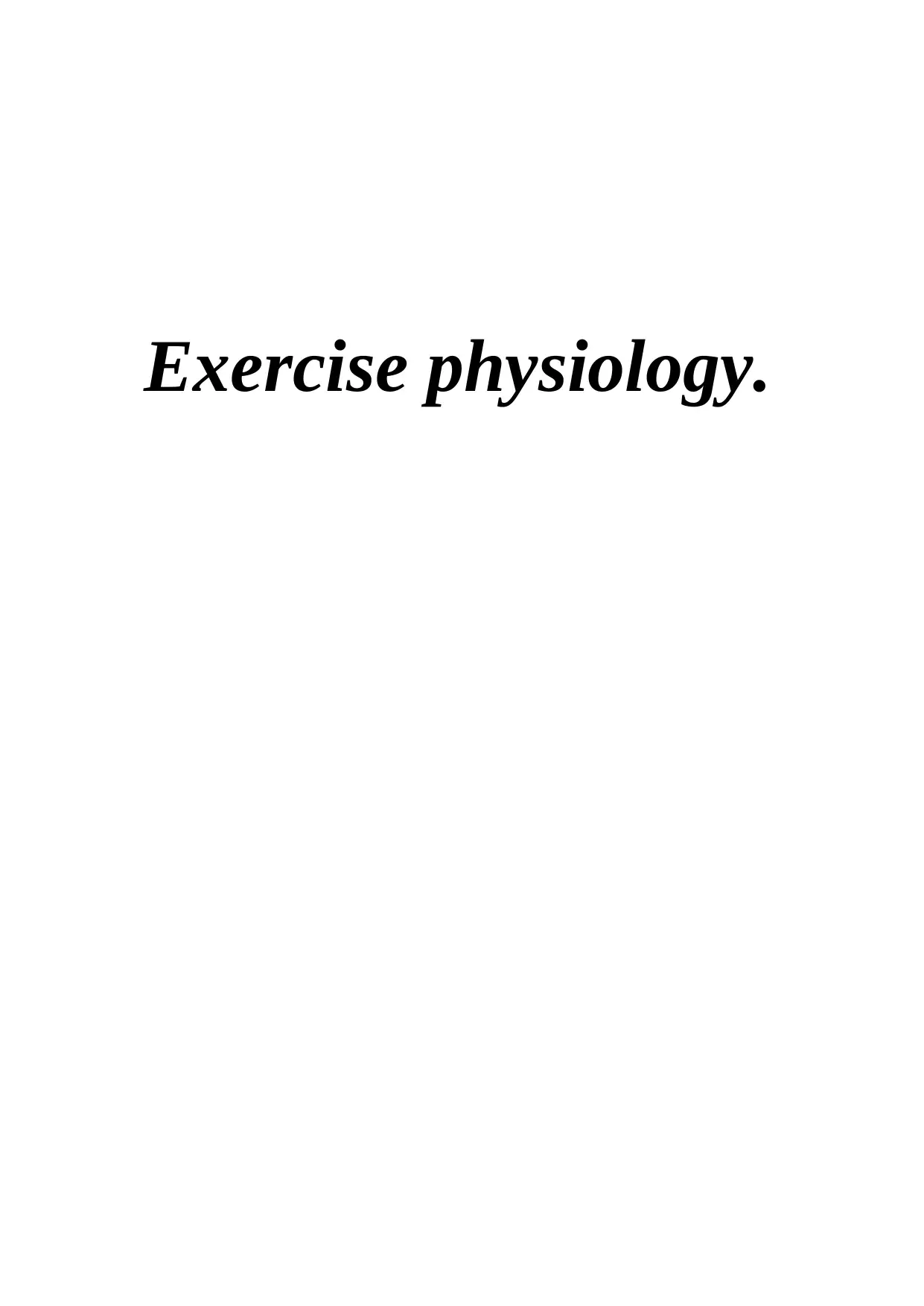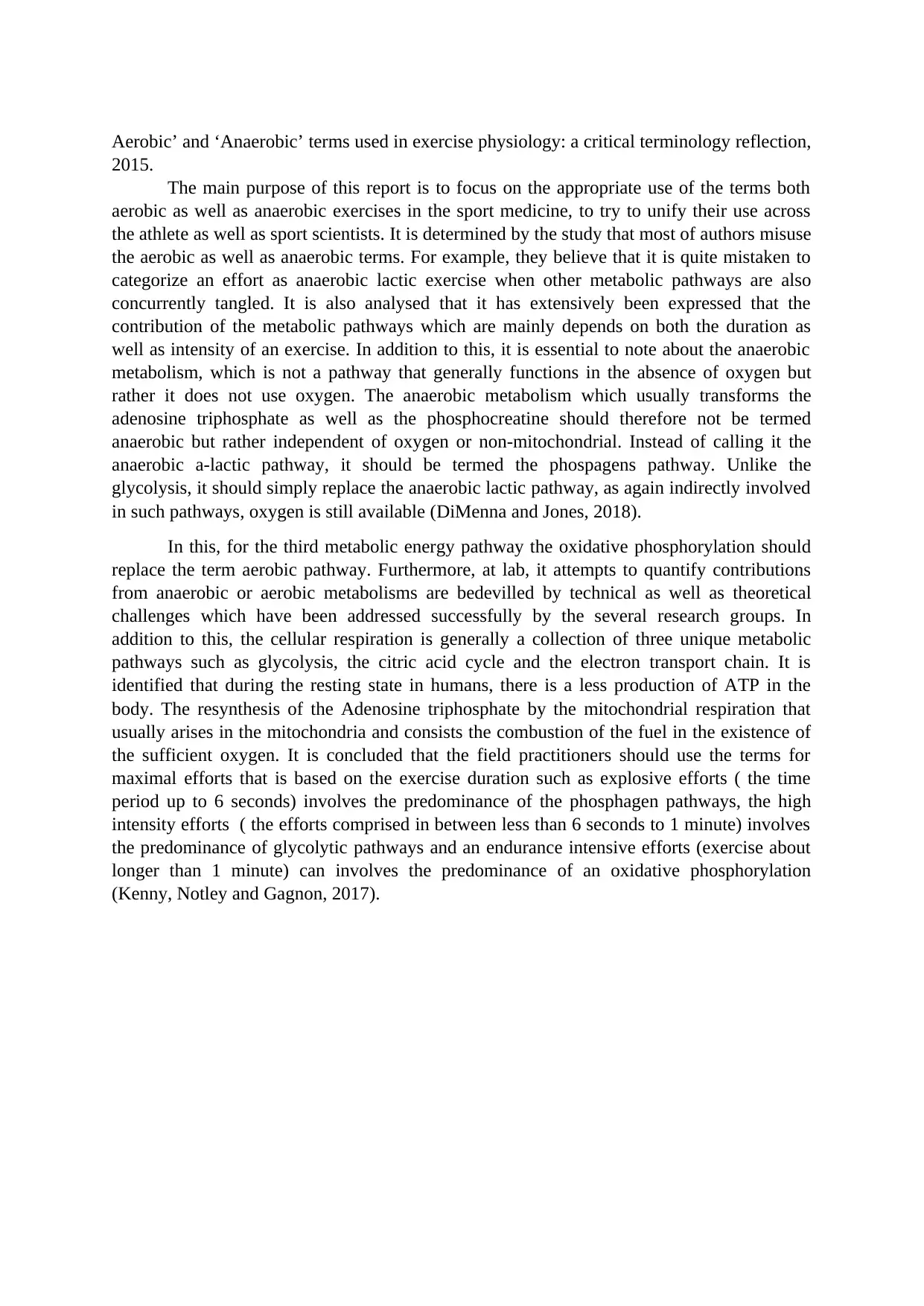Exercise Physiology Report: Aerobic and Anaerobic Terminology Usage
VerifiedAdded on 2023/06/17
|4
|643
|191
Report
AI Summary
This report critically examines the use of 'aerobic' and 'anaerobic' terms in exercise physiology and sports medicine, aiming to unify their application among athletes and sport scientists. It highlights the misuse of these terms by authors, particularly in categorizing efforts as anaerobic lactic when other metabolic pathways are involved. The report emphasizes that the contribution of metabolic pathways depends on exercise duration and intensity. It clarifies that anaerobic metabolism doesn't function solely without oxygen but rather doesn't utilize it, suggesting 'oxygen-independent' or 'non-mitochondrial.' Alternative terms like 'phosphagen pathway' and 'oxidative phosphorylation' are proposed for better accuracy. The report concludes by recommending terminology based on exercise duration, such as explosive efforts for phosphagen pathways, high-intensity efforts for glycolytic pathways, and endurance efforts for oxidative phosphorylation. Desklib offers more resources on exercise physiology and related topics.
1 out of 4






![[object Object]](/_next/static/media/star-bottom.7253800d.svg)